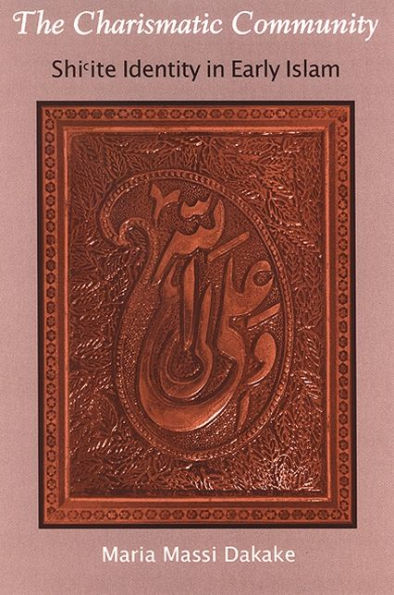The Charismatic Community examines the rise and development of Shiite religious identity in early Islamic history, analyzing the complex historical and intellectual processes that shaped the sense of individual and communal religious vocation. The book reveals the profound and continually evolving connection between the spiritual ideals of the Shiite movement and the practical processes of community formation. Author Maria Massi Dakake traces the Quranic origins and early religious connotations of the concept of walayah and the role it played in shaping the sense of communal solidarity among followers of the first Shiite Imam, Ali b. Abi Talib. Dakake argues that walayah pertains not only to the charisma of the Shiite leadership and devotion to them, but also to solidarity and loyalty among the members of the community itself. She also looks at the ways in which doctrinal developments reflected and served the practical needs of the Shiite community, the establishment of identifiable boundaries and minimum requirements of communal membership, the meaning of women's affiliation and identification with the Shiite movement, and Shiite efforts to engender a more normative and less confrontational attitude toward the non-Shiite Muslim community.
1101501040
The Charismatic Community: Shi?ite Identity in Early Islam
The Charismatic Community examines the rise and development of Shiite religious identity in early Islamic history, analyzing the complex historical and intellectual processes that shaped the sense of individual and communal religious vocation. The book reveals the profound and continually evolving connection between the spiritual ideals of the Shiite movement and the practical processes of community formation. Author Maria Massi Dakake traces the Quranic origins and early religious connotations of the concept of walayah and the role it played in shaping the sense of communal solidarity among followers of the first Shiite Imam, Ali b. Abi Talib. Dakake argues that walayah pertains not only to the charisma of the Shiite leadership and devotion to them, but also to solidarity and loyalty among the members of the community itself. She also looks at the ways in which doctrinal developments reflected and served the practical needs of the Shiite community, the establishment of identifiable boundaries and minimum requirements of communal membership, the meaning of women's affiliation and identification with the Shiite movement, and Shiite efforts to engender a more normative and less confrontational attitude toward the non-Shiite Muslim community.
27.99
In Stock
5
1

The Charismatic Community: Shi?ite Identity in Early Islam
335
The Charismatic Community: Shi?ite Identity in Early Islam
335eBook
$27.99
$36.95
Save 24%
Current price is $27.99, Original price is $36.95. You Save 24%.
Related collections and offers
27.99
In Stock

Product Details
| ISBN-13: | 9780791480342 |
|---|---|
| Publisher: | State University of New York Press |
| Publication date: | 02/01/2012 |
| Series: | SUNY series in Islam |
| Sold by: | Barnes & Noble |
| Format: | eBook |
| Pages: | 335 |
| File size: | 5 MB |
About the Author
From the B&N Reads Blog
